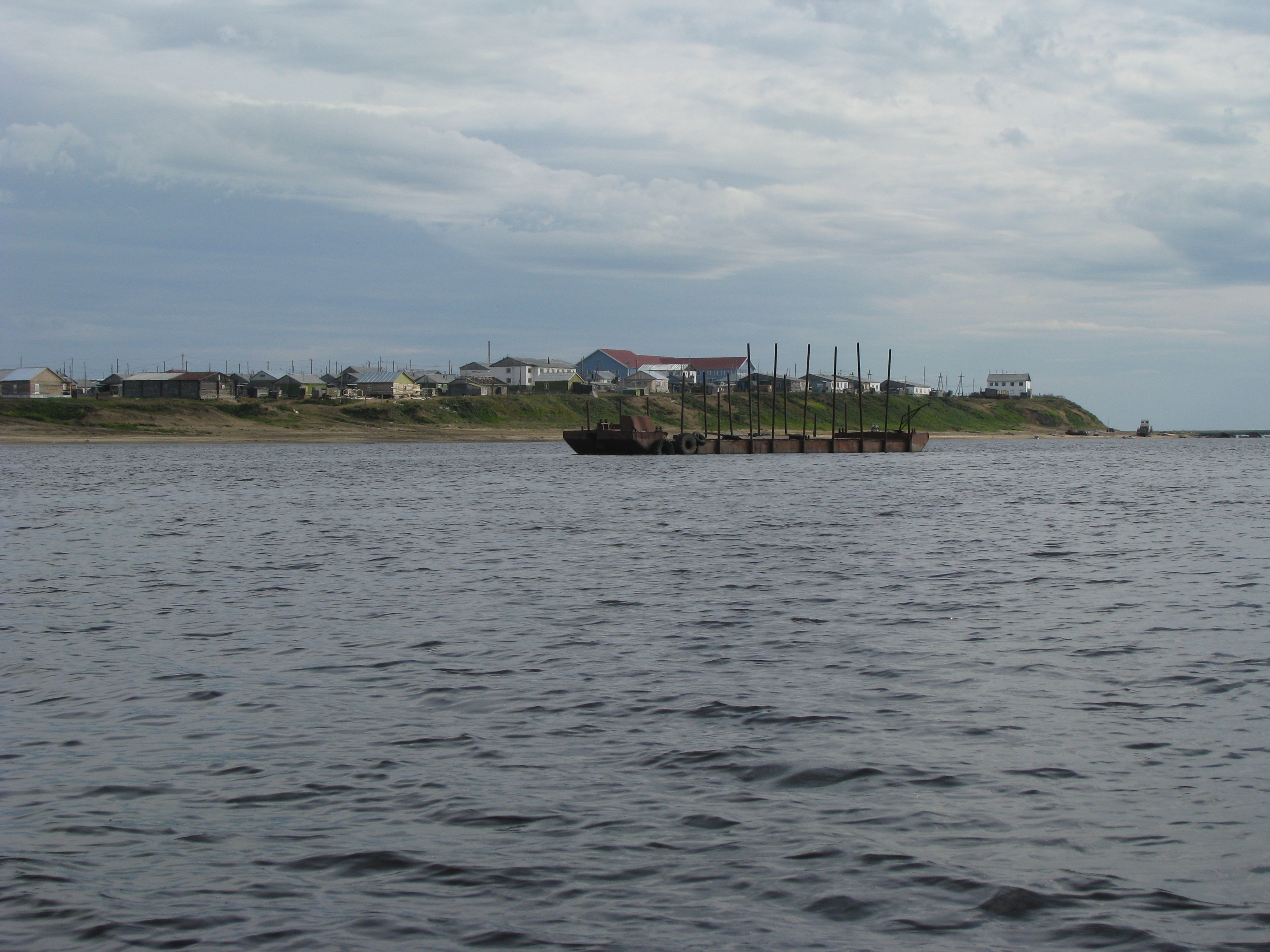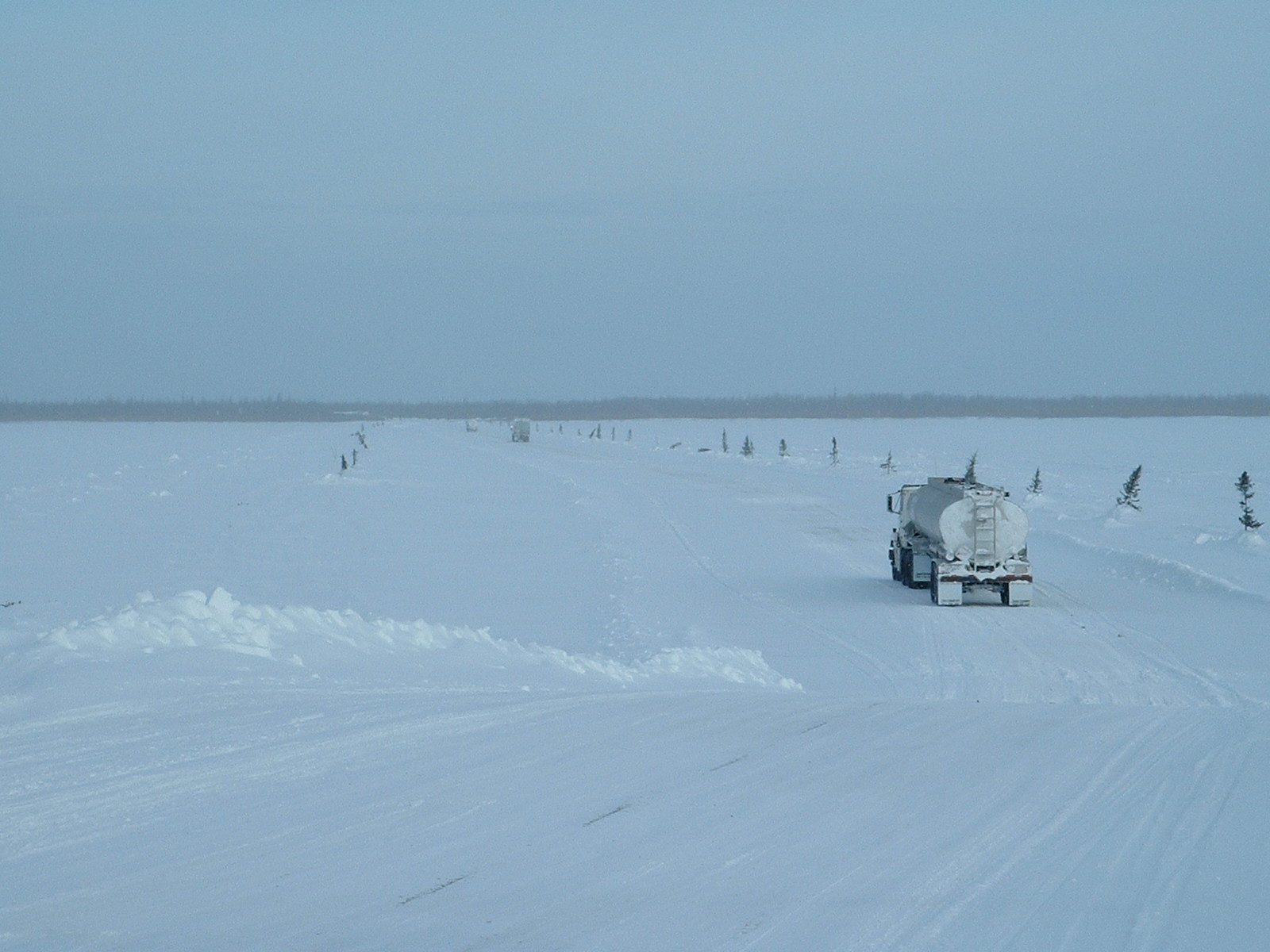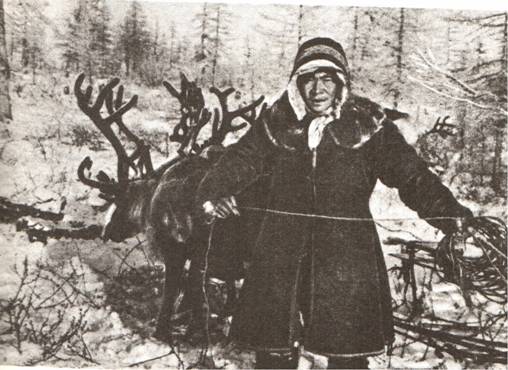|
Yuryung-Khaya
Yuryung-Khaya (russian: Юрюнг-Хая, sah, Үрүҥ Хайа ''Ürüŋ xaya'') is a rural locality (a '' selo''), the only inhabited locality, and the administrative center of Yuryung-Khainsky National (Dolgan) Rural Okrug of Anabarsky District in the Sakha Republic, Russia, located from Saskylakh, the administrative center of the district. Its population as of the 2010 Census was 1,148,Sakha Republic Territorial Branch of the Federal State Statistics Service. Results of the 2010 All-Russian CensusЧисленность населения по районам, городским и сельским населённым пунктам(''Population Counts by Districts, Urban and Rural Inhabited Localities'') of whom 552 were male and 596 female, up from 1,051 recorded during the 2002 Census.''Registry of the Administrative-Territorial Divisions of the Sakha Republic'' Geography The village is situated on the right bank of the Anabar River, shortly before it flows into the ... [...More Info...] [...Related Items...] OR: [Wikipedia] [Google] [Baidu] |
Yuryung-Khainsky National (Dolgan) Rural Okrug
Yuryung-Khaya (russian: Юрюнг-Хая, sah, Үрүҥ Хайа ''Ürüŋ xaya'') is a types of inhabited localities in Russia, rural locality (a ''village#Russia, selo''), the only inhabited locality, and the administrative center of Yuryung-Khainsky National (Dolgan) Rural Okrug of Anabarsky District in the Sakha Republic, Russia, located from Saskylakh, the administrative center of the district. Its population as of the Russian Census (2010), 2010 Census was 1,148,Sakha Republic Territorial Branch of the Russian Federal State Statistics Service, Federal State Statistics Service. Results of the 2010 All-Russian CensusЧисленность населения по районам, городским и сельским населённым пунктам(''Population Counts by Districts, Urban and Rural Inhabited Localities'') of whom 552 were male and 596 female, up from 1,051 recorded during the Russian Census (2002), 2002 Census.''Registry of the Administrative-Territorial D ... [...More Info...] [...Related Items...] OR: [Wikipedia] [Google] [Baidu] |
Anabarsky District
Anabarsky District (russian: Анаба́рский улу́с; sah, Анаабыр улууһа, ''Anaabyr uluuha'', ) is an administrativeConstitution of the Sakha Republic, Article 45 and municipalLaw #172-Z #351-III district ( raion, or ''ulus''), one of the thirty-four in the Sakha Republic, Russia. It is located in the northwest of the republic and borders with Bulunsky District in the east, Olenyoksky District in the south, and with Taymyrsky Dolgano-Nenetsky District of Krasnoyarsk Krai in the west. The area of the district is .Registry of the Administrative-Territorial Divisions of the Sakha Republic Its administrative center is the rural locality (a '' selo'') of Saskylakh. As of the 2010 Census, the total population of the district was 3,501, with the population of Saskylakh accounting for 66.2% of that number. Geography The district is washed by the Laptev Sea in the north. The landscape of the district is mostly flat. The main rivers are the Anab ... [...More Info...] [...Related Items...] OR: [Wikipedia] [Google] [Baidu] |
Saskylakh
Saskylakh (russian: Саскылах; sah, Сааскылаах, ''Saaskılaax'') is a rural locality (a '' selo'') and the administrative center of Anabarsky District in the Sakha Republic, Russia.''Registry of the Administrative-Territorial Divisions of the Sakha Republic'' Its population as of the 2010 Census was 2,317, up from 1,985 recorded during the 2002 Census and further up from 1,856 recorded during the 1989 Census. Geography Saskylakh is located on the right bank of the Anabar River, downstream from the confluence with the Udya. It is one of the main ports in the river. Google Earth History It was founded in 1930 as a part of Soviet efforts to settle the nomadic Yakuts, Evenks, and Dolgans who lived in the area. Transportation There are no year-round roads leading to Saskylakh, although there is a winter road which leads to Olenyok and then further south to Udachny. In the opposite direction, the road also continues downstream along the Anabar to ... [...More Info...] [...Related Items...] OR: [Wikipedia] [Google] [Baidu] |
Sakha Republic
Sakha, officially the Republic of Sakha (Yakutia),, is the largest republic of Russia, located in the Russian Far East, along the Arctic Ocean, with a population of roughly 1 million. Sakha comprises half of the area of its governing Far Eastern Federal District, and is the world's largest country subdivision, covering over 3,083,523 square kilometers (1,190,555 sq mi). ''Sakha'' following regular sound changes in the course of development of the Yakut language) as the Evenk and Yukaghir exonyms for the Yakuts. It is pronounced as ''Haka'' by the Dolgans, whose language is either a dialect or a close relative of the Yakut language.Victor P. Krivonogov, "The Dolgans’Ethnic Identity and Language Processes." ''Journal of Siberian Federal University'', Humanities & Social Sciences 6 (2013 6) 870–888. Geography * ''Borders'': ** ''internal'': Chukotka Autonomous Okrug (660 km)(E), Magadan Oblast (1520 km)(E/SE), Khabarovsk Krai (2130 km)(SE), Amur Oblast (S ... [...More Info...] [...Related Items...] OR: [Wikipedia] [Google] [Baidu] |
Yakut Language
Yakut , also known as Yakutian, Sakha, Saqa or Saxa ( sah, саха тыла), is a Turkic language spoken by around 450,000 native speakers, primarily the ethnic Yakuts and one of the official languages of Sakha (Yakutia), a federal republic in the Russian Federation. The Yakut language differs from all other Turkic languages in the presence of a layer of vocabulary of unclear origin (possibly Paleo-Siberian). There is also a large number of words of Mongolian origin related to ancient borrowings, as well as numerous recent borrowings from Russian. Like other Turkic languages and their ancestor Proto-Turkic, Yakut is an agglutinative language and features vowel harmony. Classification Yakut is a member of the Northeastern Common Turkic family of languages, which also includes Shor, Tuvan and Dolgan. Like most Turkic languages, Yakut has vowel harmony, is agglutinative and has no grammatical gender. Word order is usually subject–object–verb. Yakut has been influenced b ... [...More Info...] [...Related Items...] OR: [Wikipedia] [Google] [Baidu] |
Köppen Climate Classification
The Köppen climate classification is one of the most widely used climate classification systems. It was first published by German-Russian climatologist Wladimir Köppen (1846–1940) in 1884, with several later modifications by Köppen, notably in 1918 and 1936. Later, the climatologist Rudolf Geiger (1894–1981) introduced some changes to the classification system, which is thus sometimes called the Köppen–Geiger climate classification system. The Köppen climate classification divides climates into five main climate groups, with each group being divided based on seasonal precipitation and temperature patterns. The five main groups are ''A'' (tropical), ''B'' (arid), ''C'' (temperate), ''D'' (continental), and ''E'' (polar). Each group and subgroup is represented by a letter. All climates are assigned a main group (the first letter). All climates except for those in the ''E'' group are assigned a seasonal precipitation subgroup (the second letter). For example, ''Af'' indi ... [...More Info...] [...Related Items...] OR: [Wikipedia] [Google] [Baidu] |
Polar Climate
The polar climate regions are characterized by a lack of warm summers but with varying winters. Every month in a polar climate has an average temperature of less than . Regions with polar climate cover more than 20% of the Earth's area. Most of these regions are far from the equator and near the poles, and in this case, winter days are extremely short and summer days are extremely long (could last for the entirety of each season or longer). A polar climate consists of cool summers and very cold winters, which results in treeless tundra, glaciers, or a permanent or semi-permanent layer of ice. It is identified with the letter E in the Köppen climate classification. Subtypes There are two types of polar climate: ET, or tundra climate; and EF, or ice cap climate. A tundra climate is characterized by having at least one month whose average temperature is above , while an ice cap climate has no months averaging above . In a tundra climate, even coniferous trees cannot grow, but o ... [...More Info...] [...Related Items...] OR: [Wikipedia] [Google] [Baidu] |
Winter Road
A winter road is a seasonal road only usable during the winter, i.e. it has to be re-built every year. This road typically runs over land and over frozen lakes, rivers, swamps, and sea ice.Proskin et al, 2011. Guidelines for the Construction and Operation of Winter Roads, Transportation Association of Canada.- IHSA, 2014. Best practices for building and working safely on ice covers in Ontario, Mississauga, Ontario, 43 p.- NorthWest Territories Transportation, 2015. Guidelines for safe ice construction, Yellowknife, NWT, Canada, 44 p.Spencer, P.A., Strandberg, A.G. and Maddock, W.A., 2008. Ice and toundra road design for module transport, Proceedings of the 8th International Conference on Ships and Marine Structures in Cold Regions (ICETECH), Banff. Segments of a winter road that cross an expanse of floating ice are also referred to as an ice road or an ice bridge. The foundations underlying over-land segments is most often native soil or muskeg frozen to a given depth, and local ... [...More Info...] [...Related Items...] OR: [Wikipedia] [Google] [Baidu] |
Reindeer Herding
Reindeer herding is when reindeer are herded by people in a limited area. Currently, reindeer are the only semi-domesticated animal which naturally belongs to the North. Reindeer herding is conducted in nine countries: Norway, Finland, Sweden, Russia, Greenland, Alaska (the United States), Mongolia, China and Canada. A small herd is also maintained in Scotland. Reindeer herding is conducted by individuals within some kind of cooperation, in forms such as families, districts, Sámi and Yakut villages and sovkhozy (collective farms). A person who conducts reindeer herding is called a reindeer herder and approximately 100,000 people are engaged in reindeer herding today around the circumpolar North. Domestication The domestication of the reindeer does not lend itself to a simple explanation. There is no doubt that when the glaciers retreated at the end of the last Ice Age, people followed reindeer to the North, using traps during the reindeer hunt. Modern archaeological data (rock ... [...More Info...] [...Related Items...] OR: [Wikipedia] [Google] [Baidu] |
Krasnoyarsk Kray
Krasnoyarsk Krai ( rus, Красноя́рский край, r=Krasnoyarskiy kray, p=krəsnɐˈjarskʲɪj ˈkraj) is a federal subject of Russia (a krai), with its administrative center in the city of Krasnoyarsk, the third-largest city in Siberia (after Novosibirsk and Omsk). Comprising half of the Siberian Federal District, Krasnoyarsk Krai is the largest krai in the Russian Federation, the second largest federal subject (after neighboring Sakha) and the third largest subnational governing body by area in the world, after Sakha and the Australian state of Western Australia. The krai covers an area of , which is nearly one quarter the size of the entire country of Canada (the next-largest country in the world after Russia), constituting roughly 13% of the Russian Federation's total area and containing a population of 2,828,187 (more than a third of them in the city of Krasnoyarsk), or just under 2% of its population, per the 2010 Census. Geography The krai lies in the middl ... [...More Info...] [...Related Items...] OR: [Wikipedia] [Google] [Baidu] |
Dolgans
Dolgans (; Dolgan: , , (Sakha); Yakut: ) are an ethnic group who mostly inhabit Krasnoyarsk Krai, Russia. They are descended from several groups, particularly Evenks, one of the indigenous peoples of the Russian North. They adopted a Turkic language sometime after the 18th century. The 2010 Census counted 7,885 Dolgans. This number includes 5,517 in former Taymyr Autonomous Okrug. Dolgans speak the Dolgan language, which is closely related to the Yakut language. History In the 17th century, the Dolgans lived in the basins of the Olenyok River and Lena River. They moved to their current location, Taymyr, in the 18th century. The Dolgan identity began to emerge during the 19th and early 20th centuries, under the influence of three groups who migrated to the Krasnoyarsk area from the Lena River and Olenyok River region: Evenks, Yakuts, Enets, and so-called tundra peasants (). Culture and livelihood Originally, the Dolgans were nomadic hunters and reindeer herders. How ... [...More Info...] [...Related Items...] OR: [Wikipedia] [Google] [Baidu] |






